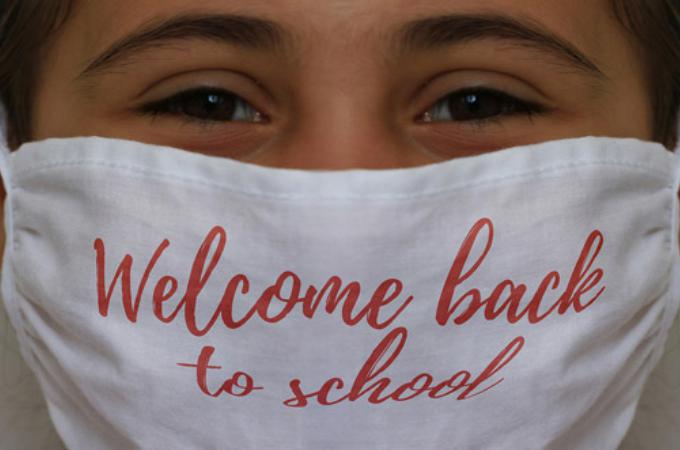The resurrection of the body
Our students are back on campus, and it has been a breath of fresh air. We asked them to quarantine for the first two weeks of the semester, since they were coming from all parts of the country and some of them would undoubtedly be shedding the virus.
During this period, we conducted classes by Zoom. Last Monday, I met my students in person for the first time. They are freshmen, and I have known them only as little electronic images on my office computer.
We are observing all the COVID-19 proprieties. Desks are six feet apart. Everyone wears a mask. I even have a free-standing plexiglass sneeze guard that I can stand behind. It makes me feel like I'm in an aquarium.
When the students filed into class, they looked different from what I had imagined they would. Several were much taller. A few got dressed up for the occasion. There was a warmth to the gathering as many of them also met in person for the first time.
It's not yet like former days. Though some of them are cute, face masks are a real barrier to interpersonal relations. Bank robbers wear them because they make it hard to identify people. So too with my class. It took me several days to recognize students just by their eyes and hair.
And it's still hard to tell what they are thinking. We have begun to apprehend that people on the autism spectrum communicate and read facial expressions differently from neurotypical people. This often leads to misunderstanding in both directions. Masks make reading faces nearly impossible, not just difficult.
For those of us with glasses, it's even harder. Mine fog up when they're inside my mask. Then there's no seeing in or out.
And of course, nobody touches these days. Hugs may have stopped when Joe Biden's critics went after him in 2019. But in the time of COVID-19, we can't even shake hands. That has been a hard habit for me to break. I can't get into elbow bumps or the Vulcan salute.
So we're not all the way back, but our return to something approximating in-person instruction has been a kind of mini-resurrection. The university and its people have, as it were, come back to life. And it has been a reminder that our bodies are an essential part of what it means to be human.
Our prolonged time online has naturally focused attention on developments in artificial intelligence. We have taught machines to learn on their own and have begun to wonder whether computers, some time soon, might pass the Turing test, i.e., exhibit intelligent behavior indistinguishable from a human's.
I have my doubts about the prospects for success. But even if a computer could fool me, it would not be human. A human being is a bodily self, not, in Gilbert Ryle's phrase, a ghost in the machine. We come into being when a sperm fertilizes an oocyte. We die when the organism ceases to be.
We don't just communicate with words and symbols. We relate to one another through smiles and frowns, squints, raised eyebrows, inclination of the head, touches, hugs.
Lent prepares us for celebration of the day when Christ was resurrected bodily. And his resurrection made possible our own. It is an article of faith with Christians that we believe in "the resurrection of the body." It has been so pleasant to interact with real students in class, live and in person, even with the necessary restrictions. I can hardly imagine what it will be like on that happy day foreseen in the creed.
- Garvey is president of The Catholic University of America in Washington, D.C.



















